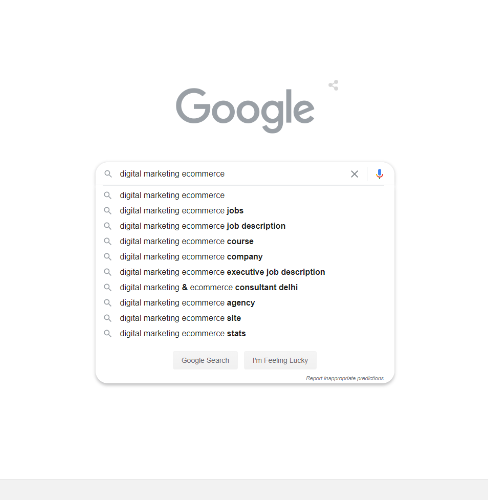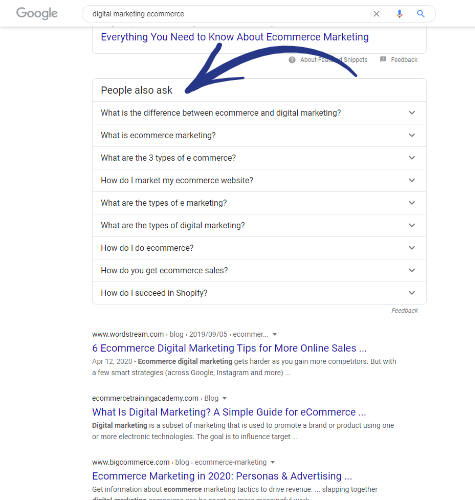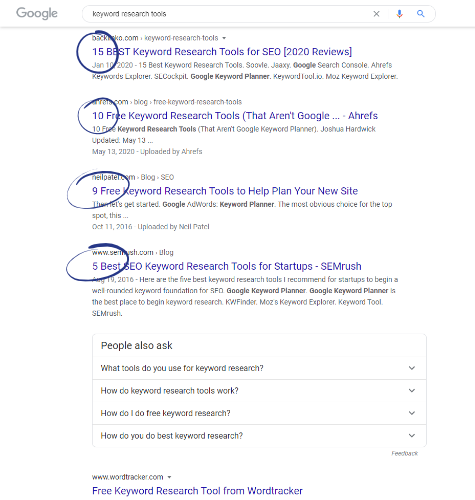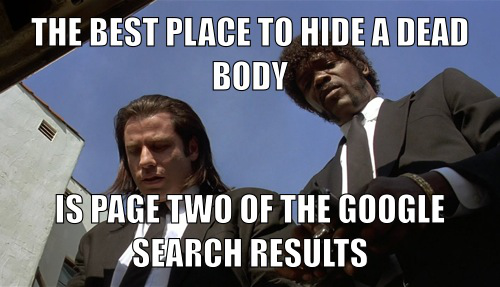There’s a ton of info on the internet that tells you what an SEO strategy is or how to create an SEO strategy.
It’s everywhere.
Mixed in with the good tools and advice are the not-so-good tools and advice. But, how do you know the difference?
For starters, you can get your information from a trusted source.
That’s why we’ve put together this article!
SEO is complicated. And using bad SEO practices can be devastating to your rankings.
Sure, there are loopholes in existing SEO ranking factors, but how long will they be there when Google makes 500–600 changes to its search algorithm every year (with some reports that it’s as many as 3,200 changes)?
In this article, we’re going to outline seven simple steps you can take to build a solid SEO strategy that doesn’t even flirt with potential black hat tactics. You’ll learn how to create your SEO strategy by:
- Defining your target audience
- Conducting keyword research
- Learning from your competitors
- Optimizing your content for search intent
- Performing effective link building
- Analyzing, testing, and tweaking your tactics
Let’s get started! But, before we get into how to create an SEO strategy, it’s important to understand what an SEO strategy really is.
What Is SEO Strategy?
SEO strategy is the act of organizing your site’s content to help search engines like Google find the content that’s relevant to a user’s search intent.
This is best done by organizing your site’s content in topic clusters. Then, within those topic clusters, further organizing by keywords within those topics.
This makes your content easy for search engines to crawl and easy for users to navigate and will allow your site to rank well for long-tail keywords.
The Difference Between Strategy and Tactics
This article is going to provide the steps you need to take to create an effective SEO strategy that can be updated over time to include different SEO tactics.
Not sure of the difference between a strategy and a tactic?
Here are the definitions:
A strategy defines long-term goals and how you’ll achieve them. Think of your strategy as the path to your goal.
Tactics are the SEO best practices, plans, and resources you’ll use to achieve your goal.
So, a strategy is made up of different tactics that move you toward your goal. Those tactics can change over time.
Since we’re building an SEO strategy, a framework, you’ll be able to adjust the tactics within it as you need.
How to Create an SEO Strategy
Creating an effective SEO strategy involves a strong knowledge of your target audience and a targeted insight into your competitors.
In this article, we’re going to share with you a six-step process for building your own SEO strategy that starts with defining your target audience and ends with monitoring and testing the tactics you use to constantly improve your website ranking.
Step 1. Define Your Target Audience
The beginning of any project or campaign must start with an understanding of your target audience.
Your target audience is who you’re trying to reach with your search marketing tactics (or who you’re marketing to).
Typically, defining a target audience in marketing centers on demographics, but for search marketing, we want to center our strategy on the pain points that your brand can solve.
What problems are people trying to solve that your brand can help them solve? What do they want?
When you start with a deep dive into the needs of your audience, particularly the needs and wants of the people your products and services can help, you can focus on that content.
Remember, you want to provide content that a relevant and useful to your target audience (the people who will benefit from being connected with your brand).
From there, you’ll refine your broad target audience into segments, creating different buyer personas for each segment.
For example, if you offer digital marketing services to eCommerce businesses, you have quite a broad target audience across industries and demographics.
The keywords that work to bring Millennial eCommerce business owners to your brand aren’t going to be the same ones that bring in Baby Boomers or Gen Xers.
The cool thing about defining and refining your target audience is that you can choose which buyer personas to focus on.
Perhaps your brand just goes for Gen X and Millennial eCommerce businesses because that aligns with your brand’s values. But you won’t know until you go through the process of defining your target audience.
Defining your target audience culminates in defining the language and types of content you need to use to reach them.
At the end of this step, you should already know what kind of content resonates with your ideal customer, including how they like getting information, sharing information, and using information.
Step 2. Conduct Keyword Research
After you’ve defined your target audience and refined it into buyer personas, you’re ready for keyword research.
Keyword research is all about helping users find you and your content in search engine results pages (SERPs).
Like the content you’re creating, keywords need to be chosen to match search intent.
This means phrasing things in a specific way, with a specific intent in mind, to bring in exactly the audience you need.
This means taking a close look at what users are really trying to accomplish when they perform a search.
For instance, if you’re looking for an electrician or a plumber, you may search “plumbers near me.”
What you want is to find a plumber in physical proximity to you so you can hire them, right?
What you don’t want is content that talks about general plumbing services.
That content doesn’t match your actual intent which is to get your pipes fixed.
So, how do you find the right keywords?
Keyword research tools are quite helpful in this.
Whatever tool you decide to use, just enter the keyword you have in mind and search.
Here’s an example of what comes up when searching on AnswerThePublic for “digital marketing ecommerce:”

While this free keyword research tool doesn’t give you search volumes, it does give you many ideas for keywords and content topics.
You can even just pop your keyword into Google and Google will suggest keywords that actual users have searched.

Or, do a Google search and check out the People also ask section:

Once you have a list of keywords you want to use, you’ll need to include them in the content you produce.
Step 3. Learn From Your Competitors
Once you’ve found some keywords you want to target, you’ll want to find out who you’re competing against to rank for those keywords.
Just type the keywords into Google and scan the first page of results.
What patterns do you notice?
For example, SERPs for “keyword research tools” shows result after result of list posts.

If you want to talk about this topic and make it to the first page, you’ll need to create a list post.
But not just any list post.
Your list post has to be better than the other results in the top ten.
In the next section, we’ll talk about how to make your content better than the competition by optimizing for search intent.
Step 4. Optimize for Search Intent
Just about anything you could think of to search for online is going to come up with hundreds or thousands of results. At minimum.
Some topics will have hundreds of millions of results.
There’s a lot of content out there.
A lot of bad content.
But search engines wouldn’t stick around long if the bad results were consistently ranked higher than the good results.
Search engines are built to show the best results first. Users know that. It’s why 75% of users never go past the first page of results.
To get your content found and bring in your target audience, you need to first get noticed by search engines.
With so many SEO ranking factors (Google has around 200), whether or not your content bubbles to the top depends on how helpful your content is to users. Or, how well your content meets search intent.
Yes, using the right keywords in your content can get your site some attention. But you need to go beyond that to stay at the top.
To stay at the top of the SERPs, you need to create high-quality content.
Here’s how:
- Research. You need to give users what they want. That varies depending on the audience you’re trying to reach, but we recommend using a mix of data and storytelling.
- Make it pretty. Most people don’t go to the internet to read walls of text. That’s what books are for. Break up your content with visuals to keep them engaged. And don’t forget that you can use graphics to share dense information.
- Make it easy to use. User experience is important. Reduce friction to your site’s visitors as much as possible. You’re not only rolling out the red carpet to welcome them but making things so nice and comfortable that they don’t want to leave.
- Remind them of their pain points. This really isn’t about reminding them of the pain points that they’re probably always aware of so much as it’s about showing them that you understand their pain points.
- Provide a solution. Your visitors know that they have a problem. What they don’t know is how to solve that problem or that you can help them solve that problem. They don’t know that following a solution could present even more problems. Show them that you get it and you can help them through it all.
- Inspire action. At the end of your content, tell visitors what to do next. Without something to do, they’ll just leave.
Step 5. Link Building
Once you have high-quality content on your site, you can improve your rankings by looking at off-page SEO.
Link building is an off-page SEO tactic that involves attracting backlinks to your website from other high-authority sites on the internet.
Creating a link building strategy means using link building tactics like:
- Guest blogging
- Broken link building
- Link reclamation
- Reverse image search
- Visual content
Here’s a great article that shows you how to use link building to boost your SEO.
Step 6. Analyze, Test, and Update
SEO doesn’t exist in a vacuum. SEO ranking factors are constantly changing and Google is constantly updating its search algorithm.
So, how do you stay relevant and on top of the results?
Analysis and testing.
Here are seven site details you can test to ensure that you’re getting the best results from your SEO strategy.
- Title tags and header tags. Title tags are what show up in SERPs and can have an enormous impact on click-through rates. Header tags are similar. They show search engines and users what your content is about.
- Internal linking. Internal linking is helpful for leading site visitors to specific content on your site that you want them to see. It also takes the overall “link juice” of your site and allocates it. Internal linking also helps search engines crawl your site.
- Layouts and images. We are visual creatures. As such, your site’s layouts and the images you choose to include can have a big impact on your site’s visitors. To woo search engines, you can test different layouts and optimize the images you use.
- Copy length. Ironically, the content that ranks the highest (those epic, 3,000+ word pillar posts) isn’t great at keeping readers’ attention. We recommend creating content of varying lengths throughout your site as well as changing up the content on existing posts to see how it impacts your SEO.
- Calls to action. Your calls to action should change over the course of a single page. To test effectiveness, change the wording to include more or less urgency or even where you put them on the page.
An SEO audit is a great way to keep your site healthy and ranking.
Build an Effective SEO Strategy
There’s always more you can do to improve your SEO. And it doesn’t matter how long you’ve been doing it. Technology is constantly changing and improving, and Google’s algorithm is ever-evolving.
The SEO strategy that we’ve outlined above is an excellent framework you can use to house your SEO tactics as they change and grow.
Ultimately, creating an effective SEO strategy involves being open to change, always putting users’ needs first, and creating high-quality, useful content.
If you want an SEO company to help you out along the way, here are the best SEO companies, ranked, so you can find the one that’s perfect for you.





















